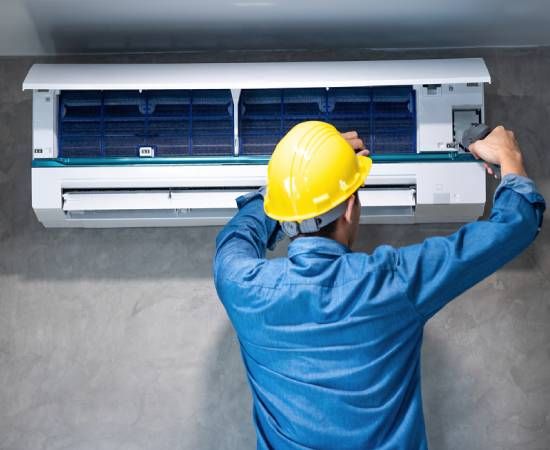
Electronics installation is a crucial aspect of any modern home or business. It involves the process of setting up and connecting various electronic devices and systems to ensure they function properly. From installing a simple home theater system to setting up complex automation systems, electronics installation plays a vital role in our daily lives.
In this article, we will explore the basics of electronics installation, including the different types of installations, the components involved, and the essential tools and equipment needed. We will also discuss planning and layout techniques for efficient installation, as well as wiring and cable management techniques for a neat and organized setup. Additionally, we will cover safety measures, troubleshooting common issues, advanced techniques for complex projects, integrating electronics with home automation systems, upgrading and modifying existing installations, and best practices for maintaining and repairing electronics installations.
Understanding the Basics of Electronics Installation
Electronics installation refers to the process of setting up and connecting electronic devices and systems to ensure their proper functioning. It involves understanding the components involved, following specific procedures, and using the appropriate tools and equipment.
There are various types of electronics installations, ranging from simple setups like installing a television or sound system to more complex projects like setting up a home automation system. Each type requires different skills and knowledge.
The components involved in electronics installations can vary depending on the specific project. Common components include cables, connectors, power supplies, switches, sensors, and control panels. Understanding how these components work together is essential for successful installation.
Essential Tools and Equipment for Electronics Installation
To perform electronics installation effectively, it is important to have the right tools and equipment. Here are some basic tools that every installer should have:
1. Screwdrivers: Different types of screwdrivers are needed to open and close electronic devices.
2. Pliers: Pliers are useful for gripping and bending wires or cables.
3. Wire cutters/strippers: These tools are used to cut and strip the insulation from wires.
4. Multimeter: A multimeter is used to measure voltage, current, and resistance in electronic circuits.
5. Crimping tool: This tool is used to attach connectors to wires.
In addition to these basic tools, specialized tools may be required for specific installations. For example, a fish tape or wire snake may be needed for running cables through walls or ceilings. A cable tester can be used to check the continuity and integrity of cables.
Safety equipment is also essential for electronics installation. This includes safety glasses, gloves, and ear protection. It is important to prioritize safety to prevent accidents and injuries during the installation process.
Planning and Layout for Efficient Electronics Installation
Proper planning and layout are crucial for efficient electronics installation. Before starting any installation project, it is important to have a clear plan in place. This includes determining the location of devices, understanding the layout of the space, and considering any specific requirements or constraints.
Factors to consider when planning and laying out electronics installations include:
1. Space: Consider the available space and how it will accommodate the devices and wiring. Ensure that there is enough room for proper ventilation and access for maintenance.
2. Power supply: Determine the power requirements of the devices and ensure that there are sufficient outlets or power sources available.
3. Connectivity: Consider how the devices will be connected to each other and to external sources such as the internet or other systems.
4. Accessibility: Plan for easy access to devices and wiring for maintenance or troubleshooting purposes.
Tips for efficient electronics installation planning and layout include:
1. Create a detailed diagram or blueprint of the installation, including the location of devices, wiring paths, and power sources.
2. Take accurate measurements of the space to ensure that devices fit properly and there is enough room for wiring.
3. Consider future expansion or upgrades when planning the layout to avoid potential issues down the line.
4. Consult with professionals or experts if needed, especially for complex installations or if you are unsure about certain aspects of the project.
Wiring and Cable Management Techniques for Neat and Organized Installation
Proper wiring and cable management are essential for a neat and organized electronics installation. Messy or tangled wires can not only be unsightly but can also lead to performance issues or safety hazards.
Importance of wiring and cable management:
1. Aesthetics: Neatly organized wires and cables contribute to a clean and professional-looking installation.
2. Performance: Proper cable management helps prevent signal interference or loss, ensuring optimal performance of devices.
3. Safety: Tangled or exposed wires can pose a safety hazard, increasing the risk of tripping or electrical accidents.
Techniques for organizing and managing wires and cables:
1. Use cable ties or zip ties to bundle and secure wires together. This helps keep them organized and prevents them from tangling.
2. Use cable management solutions such as cable trays, raceways, or wire ducts to hide and protect wires. These solutions can be mounted on walls or under desks to keep cables out of sight.
3. Label cables and connectors to easily identify them during installation, maintenance, or troubleshooting.
4. Use cable clips or adhesive-backed hooks to secure cables along walls or under desks, keeping them in place and preventing them from hanging loosely.
Tools and equipment for wiring and cable management:
1. Cable ties: These are used to bundle and secure wires together.
2. Cable management solutions: Cable trays, raceways, wire ducts, or cable sleeves can be used to hide and protect wires.
3. Cable clips or adhesive-backed hooks: These are used to secure cables along walls or under desks.
Safety Measures for Electronics Installation

Safety should always be a top priority when performing electronics installation. Working with electricity and electronic devices can be dangerous if proper precautions are not taken. Here are some important safety measures to follow:
1. Turn off the power: Before starting any installation or maintenance work, always turn off the power to the devices or circuits you will be working on. This helps prevent electrical shocks or short circuits.
2. Use proper insulation: Ensure that all wires and cables are properly insulated to prevent electrical shocks or fires. Use appropriate insulation materials such as heat shrink tubing or electrical tape.
3. Avoid overloading circuits: Do not exceed the maximum load capacity of circuits or outlets. Overloading can cause overheating and potentially lead to electrical fires.
4. Use proper grounding: Ensure that all devices and systems are properly grounded to prevent electrical shocks and protect against power surges.
5. Follow manufacturer instructions: Always read and follow the manufacturer’s instructions for installation, maintenance, and troubleshooting. This helps ensure that you are using the devices correctly and safely.
Common safety hazards in electronics installation include electrical shocks, fires, and injuries from handling sharp tools or heavy equipment. By following proper safety measures, these hazards can be minimized or avoided altogether.
Troubleshooting Common Installation Issues and Problems
During electronics installation, it is common to encounter issues or problems that need to be resolved. Troubleshooting is the process of identifying and fixing these issues to ensure that the installation functions properly.
Common installation issues and problems include:
1. Connectivity issues: Devices may not be communicating with each other or with external sources properly.
2. Power supply problems: Devices may not be receiving sufficient power or may be experiencing fluctuations in power supply.
3. Wiring or cable faults: Wires or cables may be damaged, causing connectivity issues or signal loss.
Techniques for troubleshooting installation issues and problems:
1. Check connections: Ensure that all cables and connectors are securely connected and properly seated.
2. Test power supply: Use a multimeter to check the voltage and current of the power supply to ensure it is within the required range.
3. Test cables: Use a cable tester to check the continuity and integrity of cables. This helps identify any faults or breaks in the wiring.
Tools and equipment for troubleshooting installation issues and problems:
1. Multimeter: A multimeter is used to measure voltage, current, and resistance in electronic circuits.
2. Cable tester: A cable tester is used to check the continuity and integrity of cables.
Advanced Techniques for Complex Electronics Installation Projects
Complex electronics installation projects require advanced techniques and skills. These projects may involve integrating multiple devices or systems, working with specialized equipment, or dealing with intricate wiring setups.
Types of complex electronics installation projects include:
1. Home automation systems: These systems involve integrating various devices and systems to automate and control functions such as lighting, security, heating, and entertainment.
2. Audiovisual installations: These installations involve setting up advanced audio and video systems, such as home theaters or conference room setups.
Techniques for handling complex electronics installation projects:
1. Research and planning: Thoroughly research the specific requirements and components involved in the project. Create a detailed plan and layout to ensure a smooth installation process.
2. Consult with experts: If you are unfamiliar with certain aspects of the project or if it involves specialized equipment, consult with professionals or experts who have experience in that area.
Tools and equipment for complex electronics installation projects:
1. Programming tools: Some complex installations may require programming devices or software to configure and control the systems.
2. Specialized equipment: Depending on the specific project, specialized equipment such as audiovisual receivers, amplifiers, or control panels may be needed.
Integrating Electronics with Home Automation Systems
Home automation systems are becoming increasingly popular as they offer convenience, energy efficiency, and enhanced security. Integrating electronics with these systems allows for centralized control and automation of various functions within a home.
Overview of home automation systems:
1. Lighting control: Home automation systems can control the lighting in a home, allowing for customized settings, scheduling, and energy savings.
2. Security systems: These systems can integrate with electronic devices such as cameras, sensors, and alarms to provide enhanced security and monitoring capabilities.
3. HVAC control: Home automation systems can regulate heating, ventilation, and air conditioning systems for optimal comfort and energy efficiency.
Techniques for integrating electronics with home automation systems:
1. Choose compatible devices: Ensure that the electronic devices you want to integrate are compatible with the home automation system you are using. This may involve selecting devices that support specific protocols or standards.
2. Configure the system: Follow the manufacturer’s instructions to configure the home automation system and connect the devices. This may involve setting up communication protocols, assigning device IDs, or creating automation rules.
Benefits of integrating electronics with home automation systems:
1. Convenience: Centralized control allows for easy management of various functions within a home, such as lighting, security, and temperature.
2. Energy efficiency: Automation can help optimize energy usage by scheduling or adjusting settings based on occupancy or time of day.
3. Enhanced security: Integration with security systems provides increased monitoring and control capabilities, enhancing the safety of a home.
Upgrading and Modifying Existing Electronics Installations
There are various reasons why you may need to upgrade or modify existing electronics installations. This could be due to changes in technology, the need for additional functionality, or improvements in performance.
Reasons for upgrading and modifying existing electronics installations:
1. Technological advancements: Newer technologies may offer improved features or performance compared to older devices or systems.
2. Additional functionality: You may want to add new devices or features to your existing installation to enhance its capabilities.
3. Performance improvements: Upgrading certain components or optimizing the setup can improve the overall performance of the installation.
Techniques for upgrading and modifying existing electronics installations:
1. Assess the current setup: Evaluate the existing installation to identify areas that need improvement or modification.
2. Research and select new components: Thoroughly research and select new devices or components that are compatible with your existing setup and meet your requirements.
3. Follow manufacturer instructions: Follow the manufacturer’s instructions for installation, configuration, and integration of the new components.
Tools and equipment for upgrading and modifying existing electronics installations:
1. Screwdrivers, pliers, and wire cutters: These basic tools are often needed for removing or replacing components.
2. Multimeter: A multimeter can be used to test the functionality of existing components or to troubleshoot any issues that arise during the upgrade or modification process.
Best Practices for Maintaining and Repairing Electronics Installations
Proper maintenance and timely repairs are essential for the longevity and optimal performance of electronics installations. Regular maintenance helps prevent issues before they occur, while repairs address any problems that arise.
Importance of maintaining and repairing electronics installations:
1. Longevity: Regular maintenance helps extend the lifespan of devices and systems, reducing the need for frequent replacements.
2. Performance: Proper maintenance ensures that devices and systems continue to function at their best, delivering optimal performance.
3. Cost savings: Timely repairs can prevent minor issues from escalating into major problems, saving you money on costly replacements or extensive repairs.
Techniques for maintaining and repairing electronics installations:
1. Regular cleaning: Dust and debris can accumulate on devices or in ventilation systems, affecting performance. Regularly clean devices and ensure proper airflow for cooling.
2. Software updates: Keep devices’ software up to date to ensure compatibility with other components or systems and to benefit from bug fixes or performance improvements.
3. Timely repairs: Address any issues or malfunctions promptly to prevent further damage or performance degradation.
Tools and equipment for maintaining and repairing electronics installations:
1. Cleaning supplies: Use appropriate cleaning supplies such as compressed air, lint-free cloths, and electronic-safe cleaning solutions.
2. Diagnostic tools: Tools such as multimeters or cable testers can be used to diagnose issues and identify faulty components.
Proper electronics installation is crucial for the functionality, performance, and safety of electronic devices and systems. Understanding the basics of electronics installation, having the right tools and equipment, planning and layout techniques, wiring and cable management skills, and following safety measures are essential for successful installations.
Troubleshooting common issues, handling complex projects, integrating electronics with home automation systems, upgrading existing installations, and maintaining and repairing electronics installations are advanced techniques that can enhance the functionality and longevity of your setup.
By implementing the tips and techniques discussed in this article, you can ensure a neat, organized, and efficient electronics installation that meets your needs and enhances your daily life. Remember to prioritize safety at all times and consult with professionals or experts when needed.



